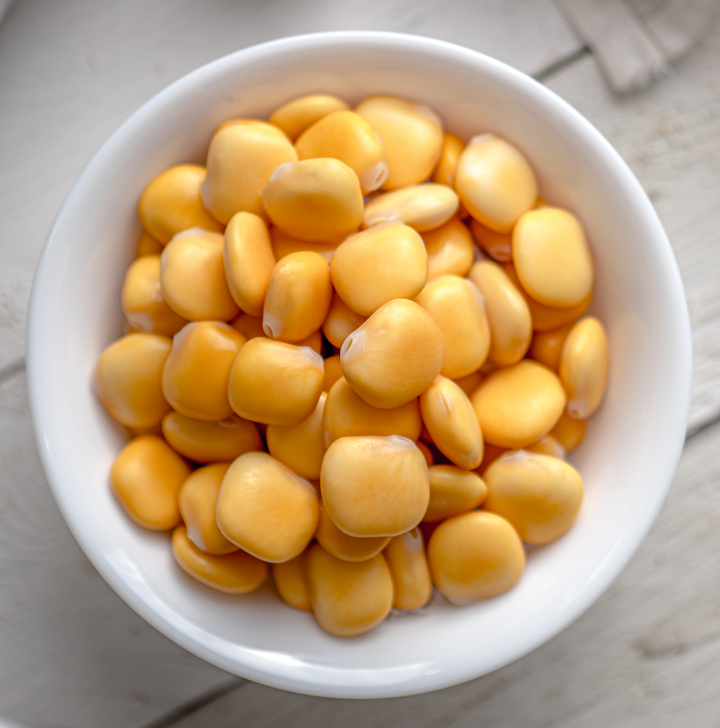Profile
Lupins occur in their wild form almost everywhere in the world and are valued as ornamental plants because of their beautiful inflorescence. The two species used agriculturally in our country are the narrow-leaved or blue lupin(Lupinus angustifolius) and the white lupin(Lupinus albus).
Both species belong to the legume or legume family. They grow as annual plants up to 1 m high, the white lupine can even grow up to 180 cm.
Usage

As with most agriculturally used, protein-rich legumes, the protein-rich green fodder is also important in addition to grain use as livestock feed. The average protein content of green forage is 20% in dry matter and is also well suited to supplementing high-energy, low-protein staple feed components (corn silage) because of its high digestibility.
In the Mediterranean countries and in South America, the valuable lupine seeds have been part of the human diet for more than 2000 years due to their ideal protein composition alongside cereals and corn. Today, a maximum alkaloid content of 0.02% applies. Lupins are gluten-free and have a low glycemic index, which keeps blood sugar levels low and is beneficial for diabetics. They are also low in uric acid-producing purines.
In Portugal and Italy, the swollen and salted lupine seeds are traditionally eaten as a snack. However, they are also served alone or together with other vegetables as a side dish, in soups, stews or salads. For human consumption, processed forms of the protein-rich seeds, such as lupine flour, are most commonly used. As an additive, it is said to improve the consistency and shelf life of baked goods and gives them a beautiful yellow color. Lupine flour is used as an ingredient with wheat flour to make bread, pasta and other baked goods and confectionery. Breads made with lupine meal are higher in protein and contain fewer carbohydrates. In addition, like soy, the beans are processed into lupine milk, plant-based meat alternatives such as lupine tofu, lupine shoyu, lupine miso or lupine mayonnaise. Vegan ice cream varieties with isolated lupin protein are also available. Processes have been developed to enrich lupin proteins, as they have excellent emulsifying properties and stability.
Compared to other legumes, lupins have a relatively high crude fat content, and the oil is also rich in unsaturated fatty acids. Lupins also contain vitamins as well as the minerals and trace elements such as calcium, zinc and iron.
All in all, the lupine is definitely an interesting enrichment for our menu and for a climate-friendlier diet.
Botany
The genus Lupinus includes a total of 200 species worldwide, only four of which, namely the white lupine(Lupinus albus), the narrow-leaved lupine(Lupinus angustifolius), the yellow lupine(Lupinus luteus) and the many-leaved lupine(Lupinus polyphyllus) are found in Austria. The many-leaved lupine in particular is often found in forest clearings, especially along forest roads, both planted and wild and in some cases even naturalised.
Agricultural aspects
In Austria, 616 hectares of sweet lupins were cultivated in 2023. The majority of this is cultivated in Lower Austria and Upper Austria.
In their wild form, lupins are relatively rich in toxic bitter substances(alkaloids) and were therefore initially used to improve light soils. In addition to loosening the soil thanks to their richly branched taproot system, the mobilisation of poorly soluble phosphate reserves in the soil is an argument in favour of soil improvement. As nitrogen collectors, lupins also enrich the soil with nitrogen for the subsequent crop and thus minimise the need for fertiliser.
Last updated: 09.10.2025
automatically translated